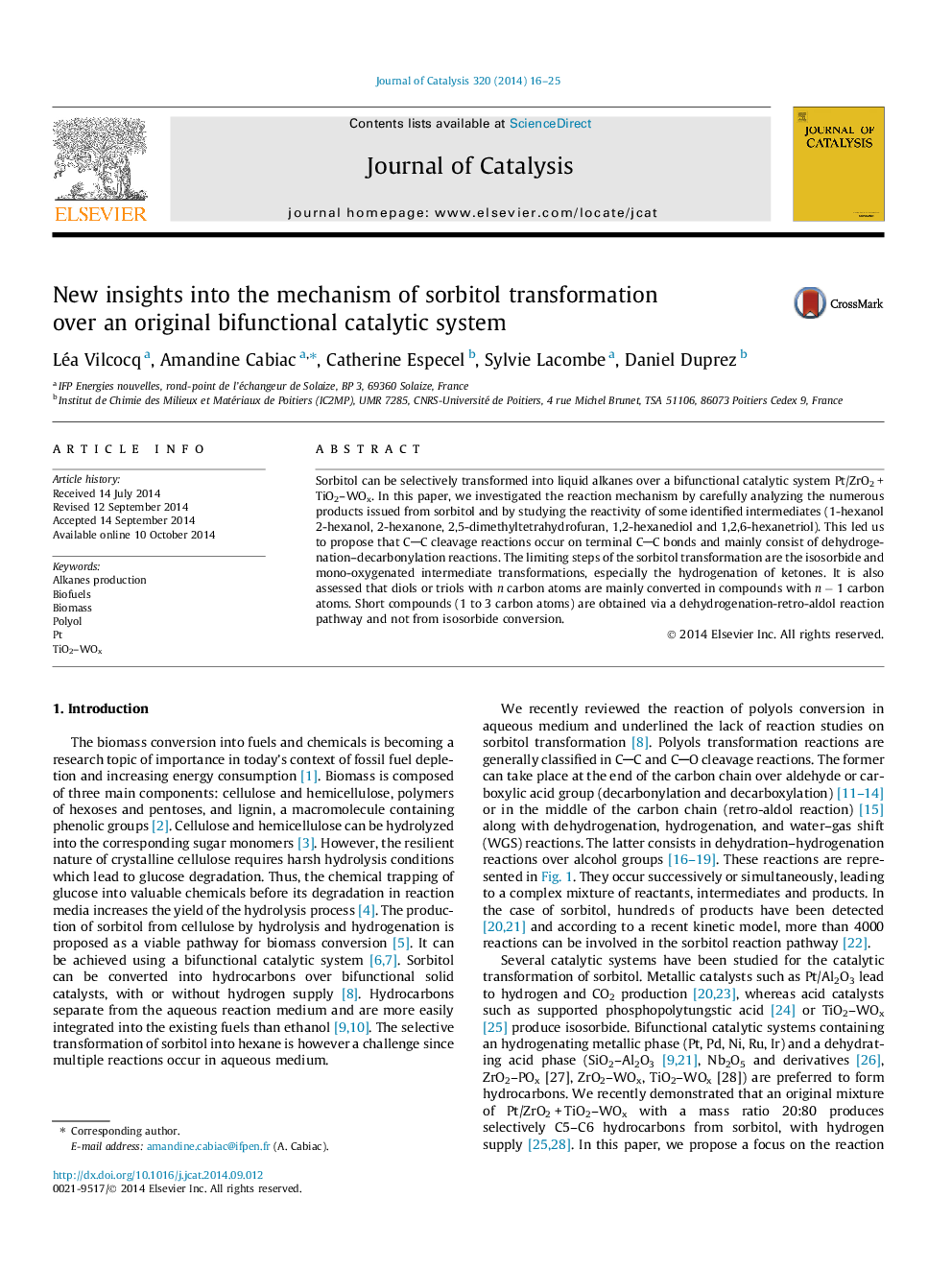| Article ID | Journal | Published Year | Pages | File Type |
|---|---|---|---|---|
| 60937 | Journal of Catalysis | 2014 | 10 Pages |
•The mixed (Pt/ZrO2 + TiO2–WOx) solid catalyzes sorbitol transformation into liquid alkanes.•The limiting steps are the isosorbide and mono-oxygenated intermediate transformations.•CC bond cleavage mainly consists of dehydrogenation–decarbonylation reactions.•The first reaction from 1,2-hexanediol and 1,2,6-hexanetriol is a CO cleavage by dehydration–hydrogenation.
Sorbitol can be selectively transformed into liquid alkanes over a bifunctional catalytic system Pt/ZrO2 + TiO2–WOx. In this paper, we investigated the reaction mechanism by carefully analyzing the numerous products issued from sorbitol and by studying the reactivity of some identified intermediates (1-hexanol 2-hexanol, 2-hexanone, 2,5-dimethyltetrahydrofuran, 1,2-hexanediol and 1,2,6-hexanetriol). This led us to propose that CC cleavage reactions occur on terminal CC bonds and mainly consist of dehydrogenation–decarbonylation reactions. The limiting steps of the sorbitol transformation are the isosorbide and mono-oxygenated intermediate transformations, especially the hydrogenation of ketones. It is also assessed that diols or triols with n carbon atoms are mainly converted in compounds with n − 1 carbon atoms. Short compounds (1 to 3 carbon atoms) are obtained via a dehydrogenation-retro-aldol reaction pathway and not from isosorbide conversion.
Graphical abstractFigure optionsDownload full-size imageDownload high-quality image (125 K)Download as PowerPoint slide
